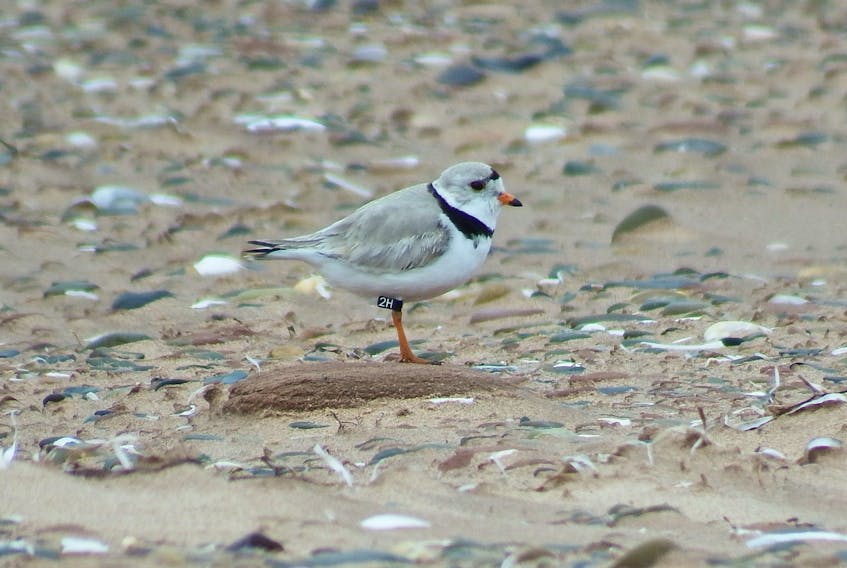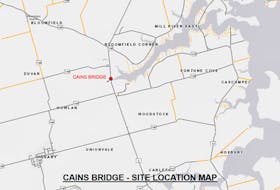The endangered piping plover population has been in “steady decline” for decades, but last week Parks Canada received a bit of good news about the species on P.E.I.
Kerry-Lynn Atkinson, a resource management officer with Parks Canada, said the number of fledged chicks is higher than has been seen in years.
There were eight breeding pairs in the P.E.I. National Park being monitored this year, and of the pairs, six had successful nests. Of the nests, 18 chicks hatched and 15 of those were able to be fledged.
A fledged chick is one that’s reached at least 20 days old, has its adult feathers coming in, is able to fly and can get itself ready for migration. For the past 10 years, the park has been monitoring an average of about six breeding pairs yearly.
“(This) is the first year since 2010 that we’ve been able to put that high of a number of chicks back into the population,” she said. “We just had a really lucky season for the birds.”
Atkinson said there are several reasons numbers could be up, including the domestic animal ban that's in effect from April 1 to Oct. 15 in certain areas of the National Park.
“They’re such small birds but they’re so incredibly strong in their abilities to protect the nest and their young. They’re both dedicated. You can’t help but fall in love with them and admire them for how steadfast they are at protecting their chicks.”
Kerry-Lynn Atkinson
There are also signs on the beach warning of the presence of piping plovers, and Parks Canada provides information on its website and social media platforms.
Parks employees are mandated to protect any species at risk that lives in the park and to keep a close eye on where the plovers will lay down their nests each season, she said.
“This year in the park, the majority of the nests were out in the Cavendish-Sandspit (area), so we were able to close off sections of the beach to protect the species.”
Atkinson said the P.E.I. National Park has been monitoring the piping plover for more than 35 years, before the bird was listed as endangered.
“We’ve gathered lots of information and we’ve had a lot of researchers in the park work with us over the years, and we’ve seen a steady decline, unfortunately, in the overall trend of their population.”
The Canadian Wildlife Service, which works with Parks Canada, banded 10 chicks and a few adults this year so the birds’ migration patterns can be tracked. The study is also being conducted to get a better understanding of where the birds are going, where they stop to feed and build up their energy and where they are coming back to.
As of Aug. 24, Atkinson had data on the banded birds showing that one adult and one chick made it to North Carolina, and another chick made it to South Carolina.
“I love hearing all the efforts that we made have paid off. Not only have they fledged, but they fulfilled their migration. They’re down south and they’re prepping for the winter,” she said, adding she was amazed at how fast they got themselves south.
“Some reports from (the bands) have shown they’re going a thousand kilometers in two days. And these are little birds, the size of your fist.”
Atkinson is impressed with how the birds look after their eggs during incubation, each taking turns sitting on the eggs, protecting them regardless of the climate.
“They’re such small birds but they’re so incredibly strong in their abilities to protect the nest and their young. They’re both dedicated. You can’t help but fall in love with them and admire them for how steadfast they are at protecting their chicks.”
Helping out
Kerry-Lynn Atkinson said the public can play a positive role in protecting the piping plover, including abiding by beach restrictions and closed-off areas, adhering to the domestic animal ban, ensuring any garbage brought to the beach is removed so not to attract wildlife and sharing knowledge with family and friends.
For more information about the piping plover, click here.









